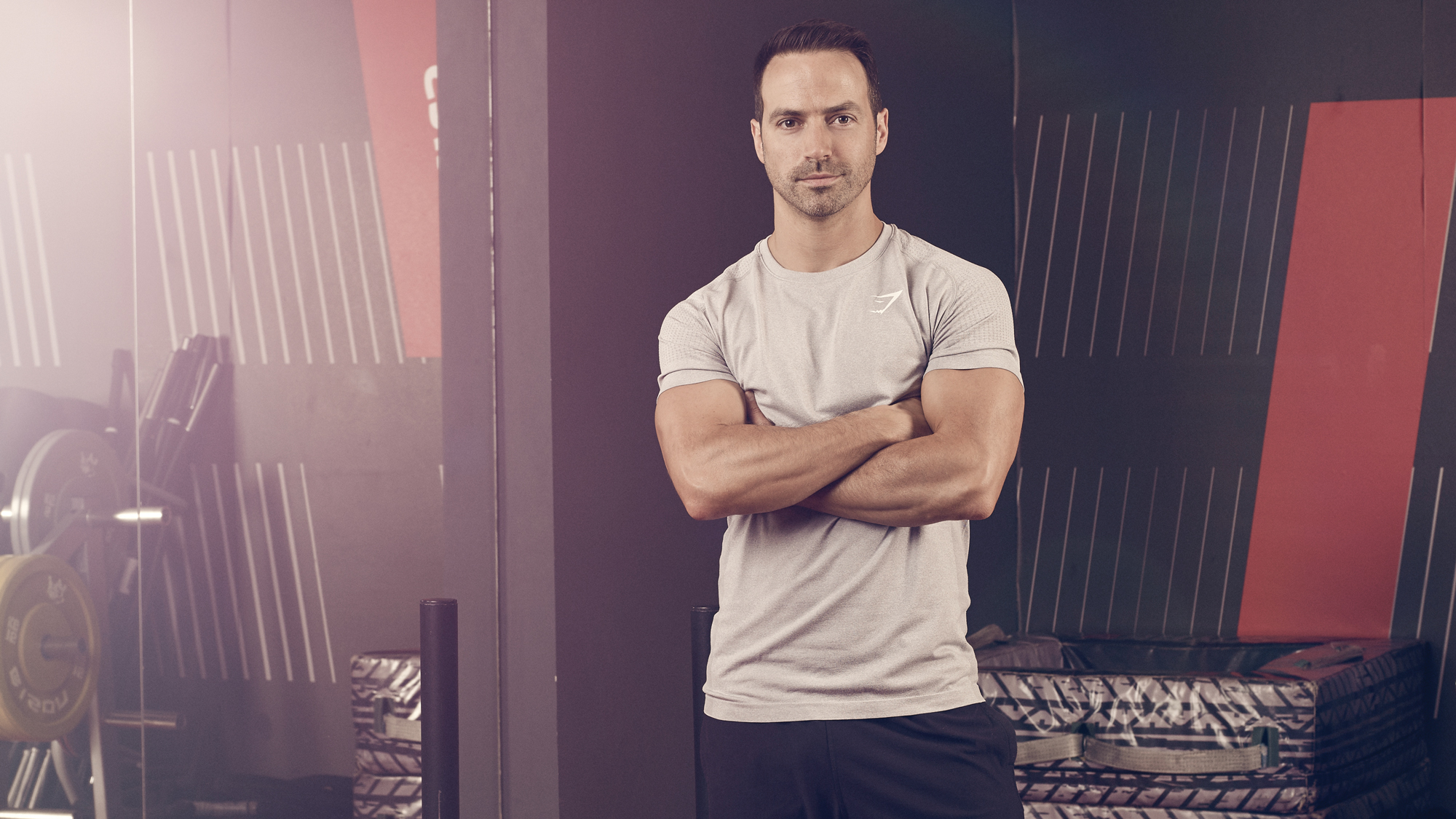Liven Up Your Training With These Slam Ball Exercises
Adding throws to your training can help you develop power, strength and a rock-solid core. Here's what you need to know
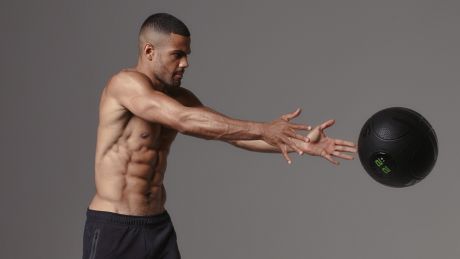
There are a few things that will have a significant impact on determining whether or not you hit your training goals, and the biggest one is turning up to the gym in the first place. If you’re not there, you’re not exactly going to get the results you’re looking for, are you? There are things you can do to ensure that you don’t skip sessions, and one is to make them enjoyable – and one of the easiest ways to do that is to incorporate throws into your workouts. They’re one of the few opportunities you get to go all-out, which makes them satisfying on a primal level. Even better, this explosive style of training has plenty of physical benefits too.
“Power movements are, for me, the ultimate pre-workout cocktail,” says Jack Lovett, owner of Spartan Performance gym. “They excite your central nervous system, which is like your mind sending a signal to your muscles, and we want that message to get there as quickly and as efficiently as possible.”
They’re also a great way of helping you to maximise the potential of your session. “Research has shown that the right power drills can also improve your strength training performance within a session,” says Lovett. “For example, in some studies, when subjects did box jumps before squats their squat strength increased compared with those who didn’t do the jumps.” The benefits are clear: they get you fired up, they get you moving more athletically and they give your strength training a boost. Here are some key moves, with Lovett’s expert coaching advice, to unleash next time you train.
If you have access to a slam ball, we’d recommend using them rather than medicine balls for throwing moves. Slam balls tend to be more durable and they also tend to bounce less than some medicine balls, which can make it easier to manage when you’re trying to catch or gather them between reps.
Ball Slam
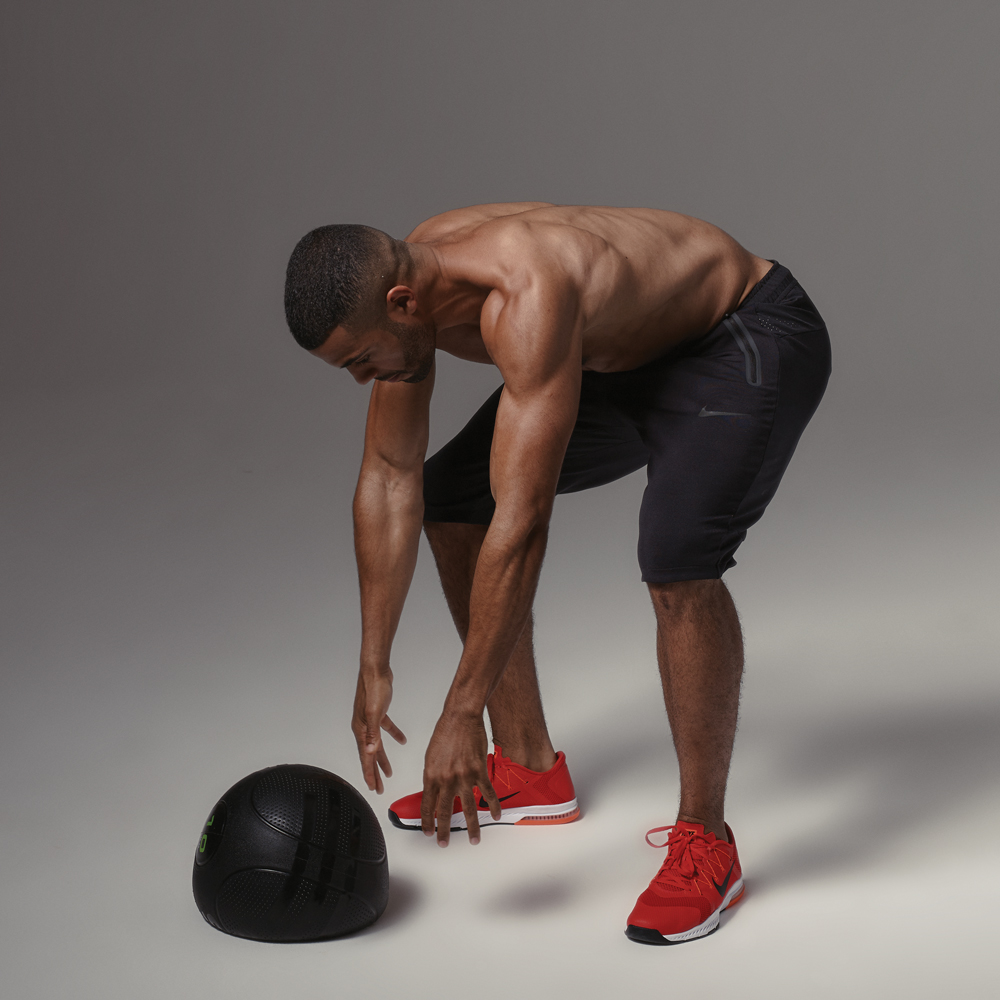
"I’d generally use this before a training session that focused on hip-hinge movements, such as a deadlift workout,” says Lovett. “You want to slam the ball as hard as possible, as if you're trying to throw the ball through the floor. One reason I like to use this move is because it has a novel quality – I’m not there to entertain my clients but the biggest factor in whether or not a programme works is adherence so if we can make the session more fun, that’s great. And considering that it’s an all-out explosive exercise, there’s not very much that can go wrong. Having said that, I did know someone who broke their nose when doing slams because the ball bounced back up and hit them in the face, so I get clients use a slam ball – a soft ball – rather than a med ball when we do this move.”
How to do it
Hold a med ball or slam ball in both hands by your stomach. Powerfully raise your hands overhead with straight arms so that you go into triple extension, which means you simultaneously extend at the hips, knees and ankles. From there, slam the ball into the floor as forcefully as you can by bringing your arms down in front of you and hinging at the hips. Catch the ball on the bounce, reset and repeat.
When to do it
“I’d use this move after you’ve warmed up as a primer for the main lift of the session and as a central nervous system activator, but it doesn’t have to be restricted to that part of the workout. You could also put it at the end of a workout with your core work. I might also superset it with kettlebell swings to create a short and intense metabolic conditioning circuit.”
Sign up for workout ideas, training advice, reviews of the latest gear and more.
How to use it
“I don’t like to use too many reps because the movement quality will drop and you lose the effectiveness of the exercise. If it’s early in the workout I’ll get the client to do three to five sets of three to five reps with full rest between sets because it’s not about testing their fitness or ability to recover – it’s about generating force. If you’re training for power, the total amount of volume in a single session would ideally be about 20 reps. If it’s later in the workout I might get them to do three sets of ten. The power will drop somewhat, but it’s still a valid exercise that will get the heart rate up.”
Wall Ball
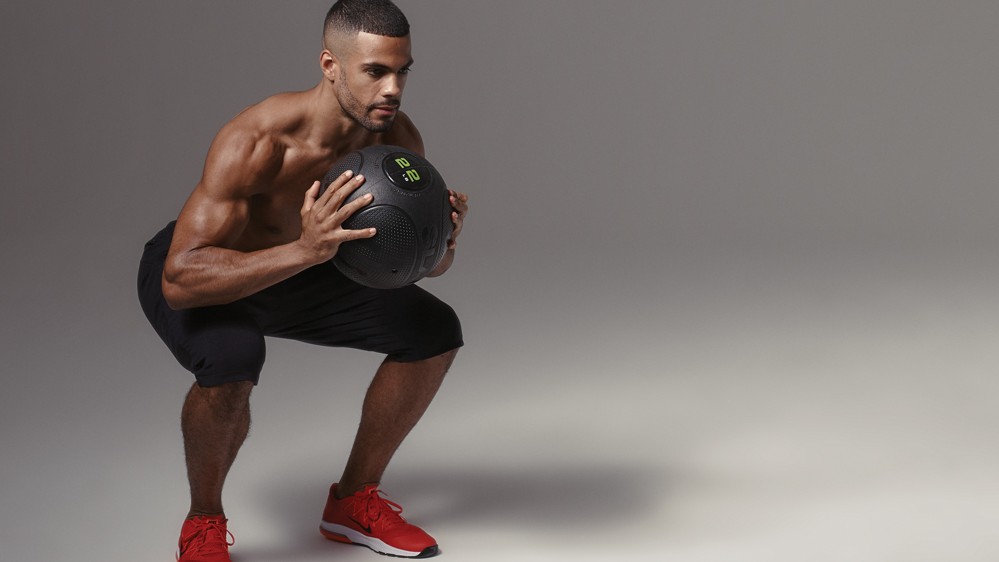
"This is a brilliant metabolic conditioning move and it is one of my absolute favourites – as long as it is used for the purpose it is designed for, which is developing the thruster movement pattern where you go from a squat to a throw," says Lovett. "It's popular in CrossFit but unlike some other CrossFit moves, which can be high-risk, this is relatively safe to do, even for higher reps. I wouldn’t give this exercise to a complete beginner or to teach someone how to squat, but if they can already squat well – particularly if they can do a good goblet squat – then it’s an excellent way of getting a full-body training effect. You don’t need to be able to squat double bodyweight before you use it. You just need a solid foundation. I also like the fact that you aim for a point on the wall because that adds a skill and co-ordination element."
How to do it
Stand facing a wall, ideally with a target marked on it higher than your head. Hold the ball in both hands and squat down, then explode up to throw the ball at the target. Gather the ball, reset and repeat.
How to use it
“I’d put it in as an assistance exercise or as a metabolic conditioning exercise at the end of a session,” says Lovett.
See related
- The Best Medicine Ball Exercises For All Levels Of Gym-Goer
- When To Use Medicine Ball Exercises
- Six Ways To Train With A Medicine Ball
- The Best Medicine Balls Of 2021
Overhead Scoop Throw
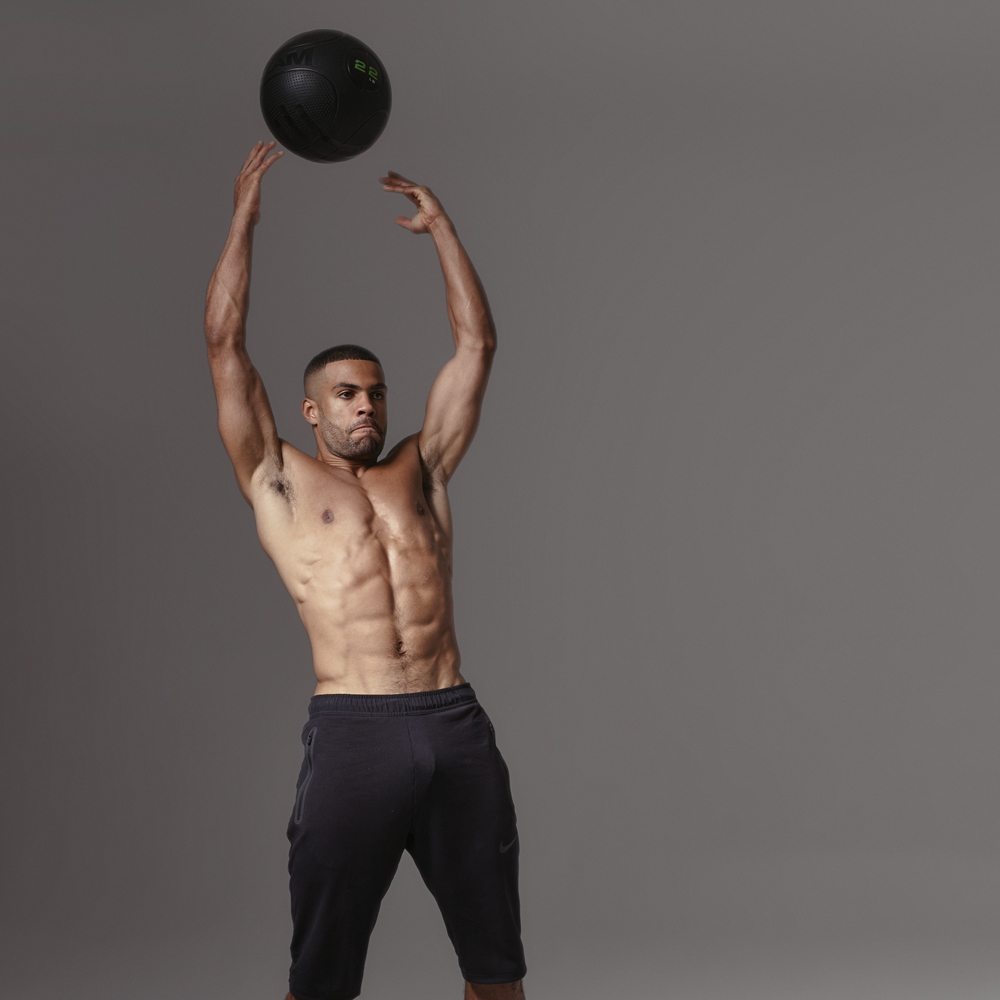
“This is my personal favourite for developing explosive power – even more so than the Olympic lifts,” says Lovett. “The reason is that it involves uninhibited triple extension. You see, when you do an Olympic lift you have to catch the bar, which involves controlling the deceleration to complete the move. With this throw, you don’t have to control the deceleration. It’s also incredibly easy to teach and learn – I could teach 20 people to do this move in one session. The only catch is that you need a lot of space. It’s also a bit more awkward to set up and carry out than the slam and it is slightly more complex so needs to be used a bit more judiciously. I reserve this exercise for people who want to increase their rate of force development and become more explosive. It works because you can quantify how well you’re doing by seeing how far the ball has been thrown. That also makes it a good one to do with a group of competitive people because you can try to beat each other. It’s a move that I find everyone enjoys doing, and it tends to have a positive impact on the application and attitude within a session.”
How to do it
Start with the ball in both hands. Hinge at the hips to lower your torso towards the floor, then explode upwards and throw the ball up and behind you. Aim to finish in triple extension, with your hips, knees and ankles extended.
The movement is similar to the Russian kettlebell swing in that you use a hip hinge movement to get into position. When you release the ball, you want it to go as high and as far back as possible.
How to use it
“As with the slam, I’d suggest three to five sets of three to five reps with complete rest for power development. It is very taxing on the body so I prefer to use lower sets and reps. You don’t need to go heavy on this move – I rarely go above 3kg.”
Half-Kneeling Rotation Wall Throw
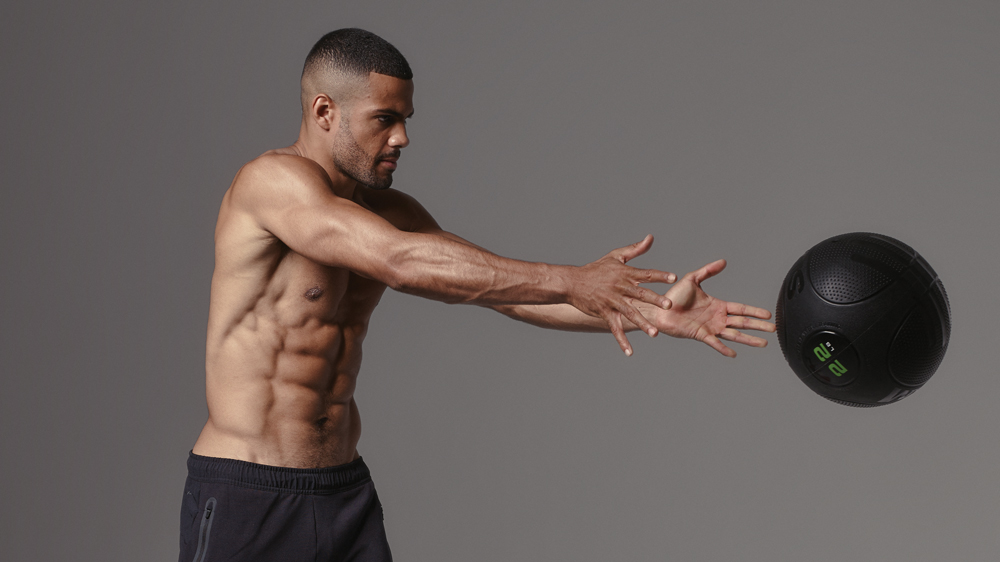
“There are a number of different rotational throws you can do but one I particularly like is the half-kneeling rotational wall throw,” says Lovett. “I mainly use this as a component of core training, and I find it works really well for people who want to develop a more athletic kind of fitness. It requires a degree of co-ordination and discipline – a lot of people let their arms and shoulders take over, rather than letting torso strength power the movement. It’s also not something I’d do straight away. I’d start with planks, then move on to an exercise such as a Pallof press [a cable pressing move done side-on to a machine to add an element of anti-rotation] and then I’d go on to this type of throw. There’s a high value in static holds but when you’re training your core, there’s an attraction to using rotational, dynamic movements. I find that makes things more engaging.”
How to do it
Stand side-on to a wall, then lower into position so you’re on one knee with both knees bent at 90°. The foot that’s closest to the wall should be flat on the floor and you should be on the toes of your other foot. Hold the medicine ball with straight arms outside the hip that’s furthest away from the wall. With your torso facing forwards, chop up and across your body and throw the ball so it hits the wall at shoulder height. Catch it and repeat the move until you have completed the set. Do an equal number of reps each side.
When to do it
“I wouldn’t use it at the beginning of a workout because it’s not meant to stimulate the central nervous system,” says Lovett. “It’s a core-specific exercise so it’s better to deploy it towards the end of a session.”
How to use it
“Again, this is similar to the slam so I use three to five sets of three to five reps,” says Lovett. “It’s all about quality, not quantity. You should use maximum effort but have the discipline to maintain the correct body position.”
Jon Lipsey worked for Men’s Fitness UK, which predated, and then shared a website with, Coach. Jon was deputy editor and editor from 2007 to 2013. He returned as editor-in-chief from 2016 to 2019. He also co-founded IronLife Media and the New Body Plan.
